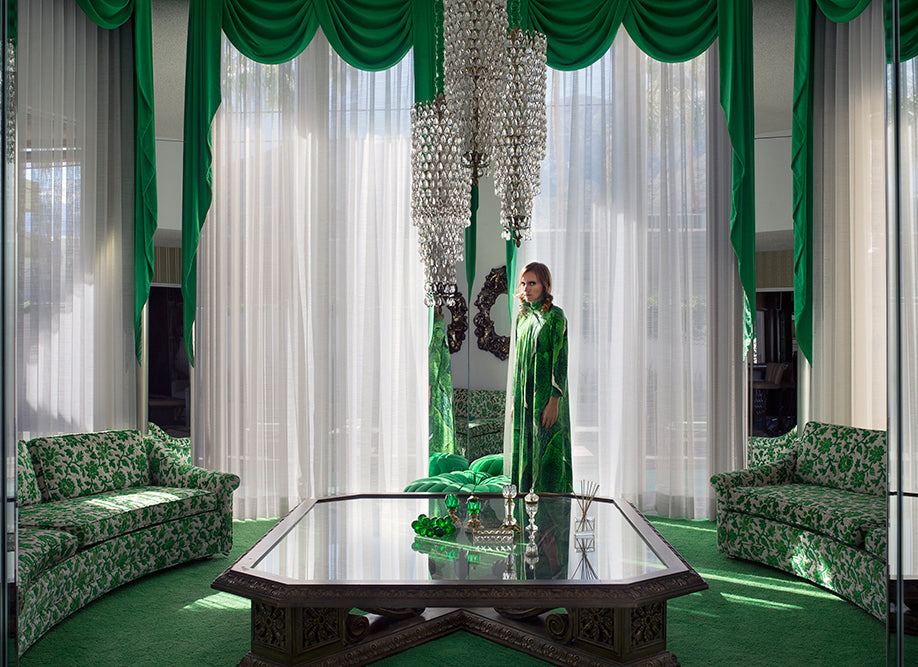"Lissa Rivera is a photographer and curator based in New York, NY. Rivera received her MFA from the School of Visual Arts, where she became fascinated with the social history of photography and the evolution of identity, sexuality and gender in relationship to material culture. Beautiful Boy, Rivera’s latest project, takes her interest in photography’s connection with identity to a personal level, focusing on her domestic partner as muse."

There seems to be a correlation spanning your portfolio that speaks to time and space, including Absence Portraits and Places of Education. It is also happens to be timely with the isolation that the current pandemic has brought upon schools and offices. Is this indicative of a broader theme in your body of work?
As much as possible, I attempt to time travel. I hope to connect to energies and histories that linger and soak into places and things.

What role, in your opinion, does the artist have in society?
The artist’s role can play out in many ways. I particularly love art’s potential to reimagine society, to suggest alternative visions of past, present, and future.

Reading the NYT article in which you talked about the growth of your relationship with your partner after your first portrait session together was fascinating in terms of human relations. What does the series Beautiful Boy mean to you on a personal level?
Beautiful Boy was a vessel for my partner BJ and I to create a world from scratch, in which we could explore our fantasies, fears and desires. It is a record of our evolving relationship to this process as well as our evolution as a couple and as artists.

What type of research or preparation goes into making your imagery? How do you choose locations?
I start with creating a lot of mood boards, reading history and watching films. After much research, I hone in on the main themes and begin looking for costumes and locations. This takes time, because I am always seeking more hidden places. The textiles and color in my work are integral to the symbolism of the pictures. I spend days searching for the accessories and garments in person at flea markets and on Ebay.

What memorable responses have you had to your work?
When people share that it helped them to accept themselves more, it is truly moving. It meant a lot to have BJ’s father at our first reception, and that he told BJ he was very proud of him. A friend once told me that it helped her to explain a more expansive view of gender to her conservative parents.

What are you up to currently?
We were scheduled to have a solo exhibition this past July at ClampArt, New York, which was postponed due to Covid-19. This was to be a compilation of never-before exhibited work from the past few years, including a video installation. It will be exciting to finally present all that we have been working on. I would love to use this time to create a book that includes BJ’s writing with the photographs.Recently, I took a break as a curator to explore filmmaking professionally. It is a bit like a dream come true and I am working hard to realize this new endeavor with the same passion I had for museum work.

My biggest inspiration has been Leonor Fini, especially for her lifestyle. Cinema is incredibly important. Kenneth Anger’s ‘Puce Moment’ and Stanley Kubrick’s ‘Barry Lyndon’ are two of my go-tos. My biggest inspiration photographically comes from vernacular photography. Vernacular collectors inspire me beyond any contemporary art.








